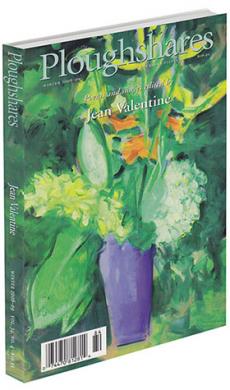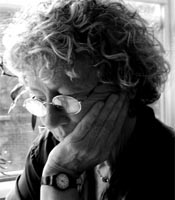rev. of The Art of the Poetic Line by James Logenbach
The Art of the Poetic Line, criticism by James Longenbach (Graywolf): James Longenbach’s The Art of the Poetic Line is a very legible book that manages to pack much wisdom and complexity into a relatively small space—which is, of course, what we expect from the best poetry itself. A poet achieves such condensation by making a series of algebraic formal choices, and Longenbach examines the most basic of these: the relation between the poetic line and the syntax of the sentence which it contains or divides. While this is certainly not a new area of inquiry (nor, to be sure, presented as one), it allows him to shed more light on what it is that keeps many of us wrestling with the line’s peculiar—and musical—challenges.
At a time when poetry critics often ignore formal concerns and writing workshops arguably downplay them, such microscopic focus on the poetic line is more necessary than many poets realize. Longenbach’s opening discussion of line endings in King Lear (he rejects the term "line breaks," explaining that syntax doesn’t always "break" at the end of a line) provides a resonant introduction to the poetic line as catalyst and calibrator of a poem’s tone, emotional temperature, and emphasis. And in keeping with the catholic nature of his references throughout the book, ranging from Herrick to Oppen to Marianne Moore, he is careful not to attribute intrinsic qualities to any particular line length or line ending. Instead, he rightly explains that the tenor of a line is determined by its relation to other lines within a poem and is therefore differential: "Enjambment is not in itself valuable: like everything else in a poem, its power depends on its relationship to other formal aspects of the poem—more specifically, the nature of the line endings surrounding it." Context is all, to (metrically) paraphrase Lear.
Though the value of such level-headed argumentation is indisputable, a reader could also object that several points here echo what is already found in the wealth of "handbook" publications available to us—for example, Robert Pinsky’s The Sounds of Poetry and Mary Kinzie’s A Poet’s Guide to Poetry (both mentioned in Longenbach’s "Further Reading" appendix). I would argue, however, that each of these poet-critics contributes unique gifts to an ongoing study of poetry as line, syntax, and sound. Longenbach’s apt discussion of line endings as either "parsing" or "annotating" syntax, expanding on the formulations of J. V. Cunningham and John Hollander respectively, offers a case in point. Here, he suggests that poetic energy cannot be reduced to the difference between enjambed and end-stopped lines but is instead calibrated by the degree to which line endings either follow (as parsing) or resist (as annotating) predictable syntactic breaks. By charting Williams’s enjambments from parsing to annotating syntax in his poems, Longenbach shows the annotated line as a vehicle for surprise and renewal, while remaining characteristically clear-eyed about the risks which both techniques necessarily court: "The excessive use of the annotating line can come to seem mannered or fussy, a way of jazzing up uninteresting syntax, just as the excessive use of the parsing line can come to feel dull, a way of merely repeating what the syntax is already doing on its own."
Here, as often, Longenbach cogently thinks through lineation choices that announce their own success by sounding precisely like fortuitous gifts of the ear. Such thinking is, of course, indispensable for the classroom. But anyone who is fascinated by the ways in which poetic line creates momentum, tone, and musicality—whether metrical or otherwise—will find much to appreciate here. —Christina Pugh
Christina Pugh is the author of Restoration (TriQuarterly, 2008 ) and Rotary (Word, 2004 ). In 2008 , she received the Lucille Medwick Memorial Award from the Poetry Society of America. She teaches at the University of Illinois at Chicago.

